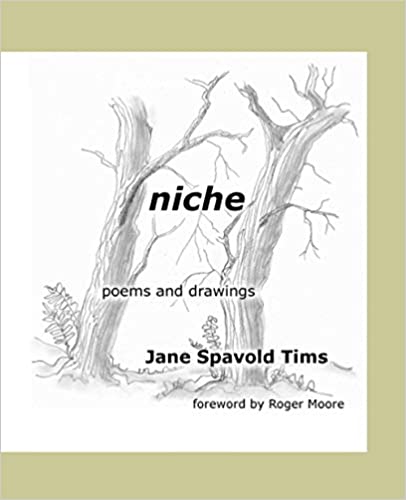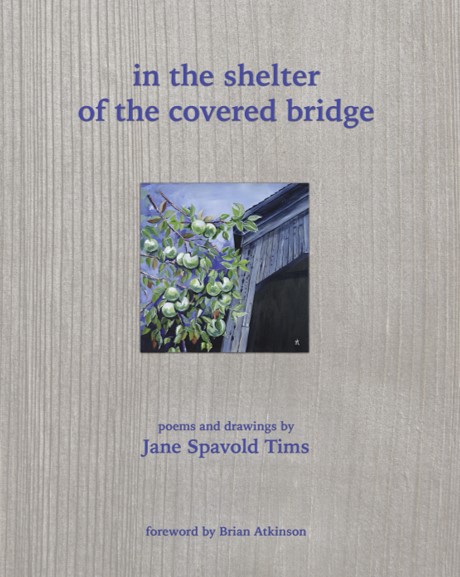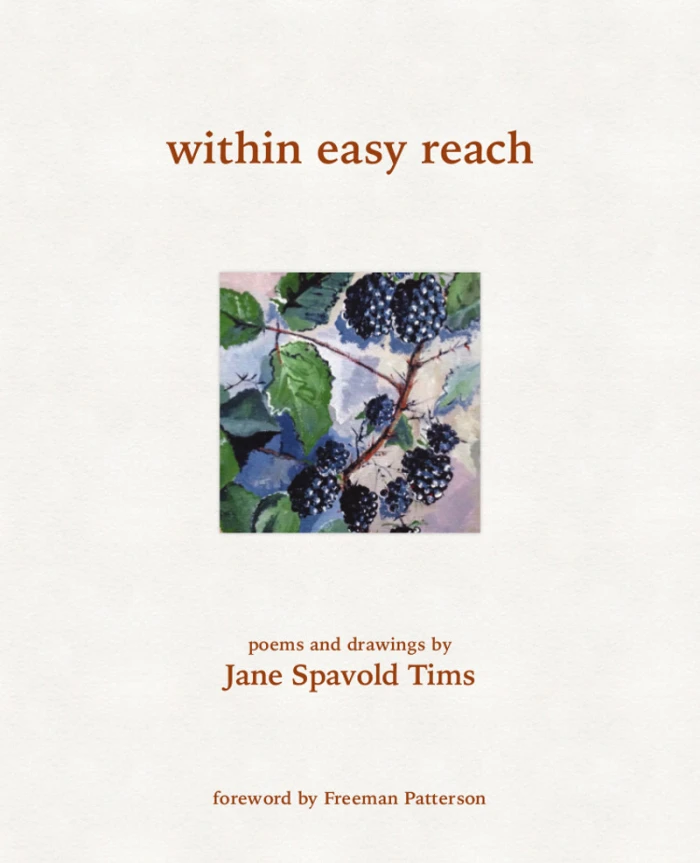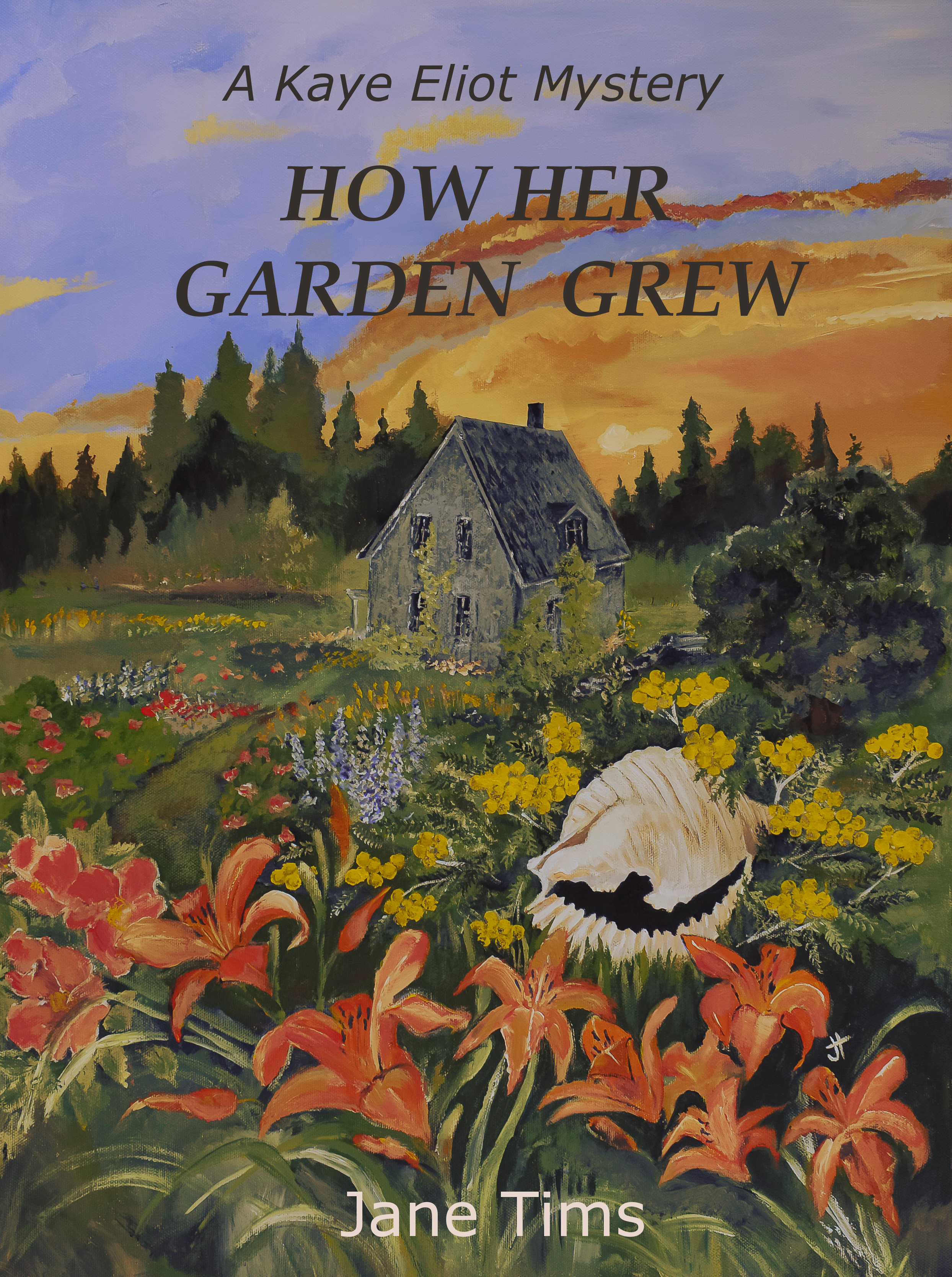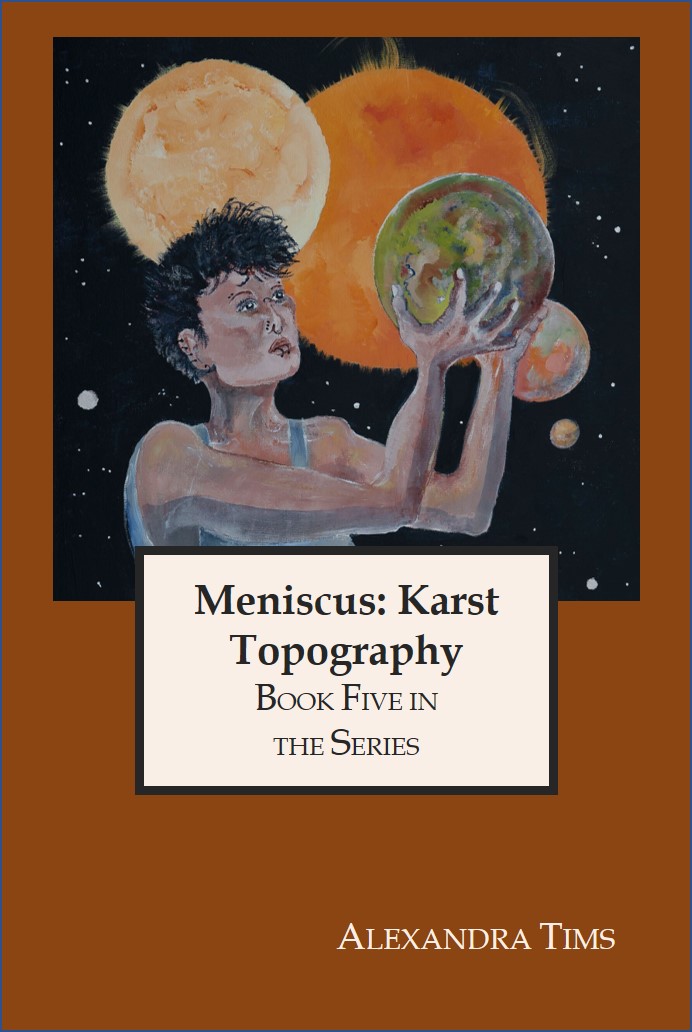Posts Tagged ‘bird watching’
a life-list first: sandhill cranes
As the result of a posting on Facebook (in New Brunswick Birders), my husband and I took a drive to the Canaan Forks area of New Brunswick to see if we could see any of the sandhill cranes spotted there. We had given up on finding them and were on the road out of the area when my husband spotted two in a field between us and the river. I wish I was a better photographer: they were so elegant and deliberate, walking the edge of the field. As they walked and fed, their legs and necks were in a strange sort of synchrony. They appear quite ‘muscular’ and could be confused with a deer if their heads are down feeding.
~

~
Both birds had the red patch on the front of the head. They stayed together, turning to retrace their steps when they came to a small ditch between fields.
~



~
The sandhill crane (Antigone canadensis) can now be added to my life list!!!!!
~

~
Have fun watching the birds now returning from their migrations!
~
All my best,
Jane
soundscape and birdsong
These last two weeks have been fun for bird watchers. I saw my first dark-eyed junco, just back from a winter spent to the south. I also heard that lovely, impossible-to-imitate song of a winter wren. And I have cleaned up our feeding area so the spring birds will be easier to watch.
~
This weekend, I am looking forward to talking with other bird watchers about my new poetry book ‘mnemonic – soundscape and birdsong.’
~

~
I am looking forward to the event, hosted by the folks at the L.P Fisher Public Library, who have been so supportive of my writing through the years! Wish you could come and hear me read …
~
All my best!
Jane
new poetry book: ‘mnemonic’ …

Subscribe to continue reading
Subscribe to get access to the rest of this post and other subscriber-only content.
a storm of birds
We are expecting major snowfall/freezing rain in the next couple of days. I think the birds must sense this because there is a veritable storm of birds at the feeders this morning.
~

~
We have evening grosbeaks, a downy woodpecker, chickadees, nuthatches and mourning doves. By far the largest numbers are the redpolls and goldfinches. We also have red and grey squirrels, but they didn’t show up this morning.
~

~
The birds fly in from our surrounding trees and feed for a while, coming and going. Then a dog barks or a car goes by and the whole flock leaves at once. Only a few brave grosbeaks cling to the feeder. Eventually, all the birds return and begin to feed.
~

~
We keep the feeders full during the cold weather and feed with nyjer (thistle) seed and black-oil sunflower seeds.
~

~
Watching the birds is lots of fun. Each species seems to have its own feeding-personality:
- the chickadees land, grab and leave as quickly as possible;
- the woodpeckers cling to the feeder and only leave when they’ve had their fill;
- the finches (redpolls and goldfinches) arrive as a flock and stay, to feed mostly on the fallen seed under the feeders;
- the grosbeaks, much bigger than the finches, mingle with them and hang on to the feeders even after other birds have been frightened away.
~

~
Bird watching is a great way to spend time during these days of pandemic lockdown. Still haven’t seen my first cardinal! And this year I haven’t yet seen a purple finch, so common in previous years.
~

~
All my best,
Jane
scribble bird
~

~
~
Winter Wren
Troglodytes hiemalis
~
How to find
centre of forest.
Joy the objective.
~
Tiny tail
shivers as he sings.
Delirious trill.
~
Troglodyte
darts into thickets,
creeps into crevasses.
~
Lifts an eyebrow,
joins a chime of wrens.
Elusive ripple,
~
varied trill,
incoherent whir,
tremble to warble.
~
Distinguish
the note, the half-note,
the tone, the tangle.
~
Forget where
you once were going,
indecisive
scribble bird.
~
~
All my best,
Jane
Birdbath
Our copper birdbath includes a silver-coloured metal bird, in case no real birds come to call. In the shade of the maple tree the water shimmers. But the little silver bird never flutters, not even a feather.
~

~
birdbath
~
embedded in dapple
edge of copper
silver bird never moves
never flutters a feather
never pecks a sparkle
from crystal water
~
bird with heartbeat
and dusty wing-feathers
lands for a bath
sputters and splashes
chooses to ignore
immobile effigy
~
~
All my best,
Jane
Safe place for a nest
No surprise to me … a robin has built a nest in the eaves of our house. Eighteen feet above the ground, this is a safe place for a nest. The robin does not think so. When I sit on the deck for my daily cup of tea, the robin sits in a near-by tree and scolds me. He gives a single annoyed chirp. If a robin could scowl, he is certainly scowling.

blue jay on a fall day
Our cabin is a great place for relaxing. Sometimes we have work to do, but sometimes we just sit back, read, watch birds or talk.
~

~
Often the birds come to us. I have had a hummingbird hover in the open door, just to check out what is inside that peculiar box on the hillside. We often see waxwings in our big pine trees or catch a glimpse of a goldfinch sashaying by.
~
This past week, a blue jay came to call. It perched on our grape arbour for a while and then examined our ATV trailer thoroughly. I don’t think he had a clue he was being watched and photographed.
~

~
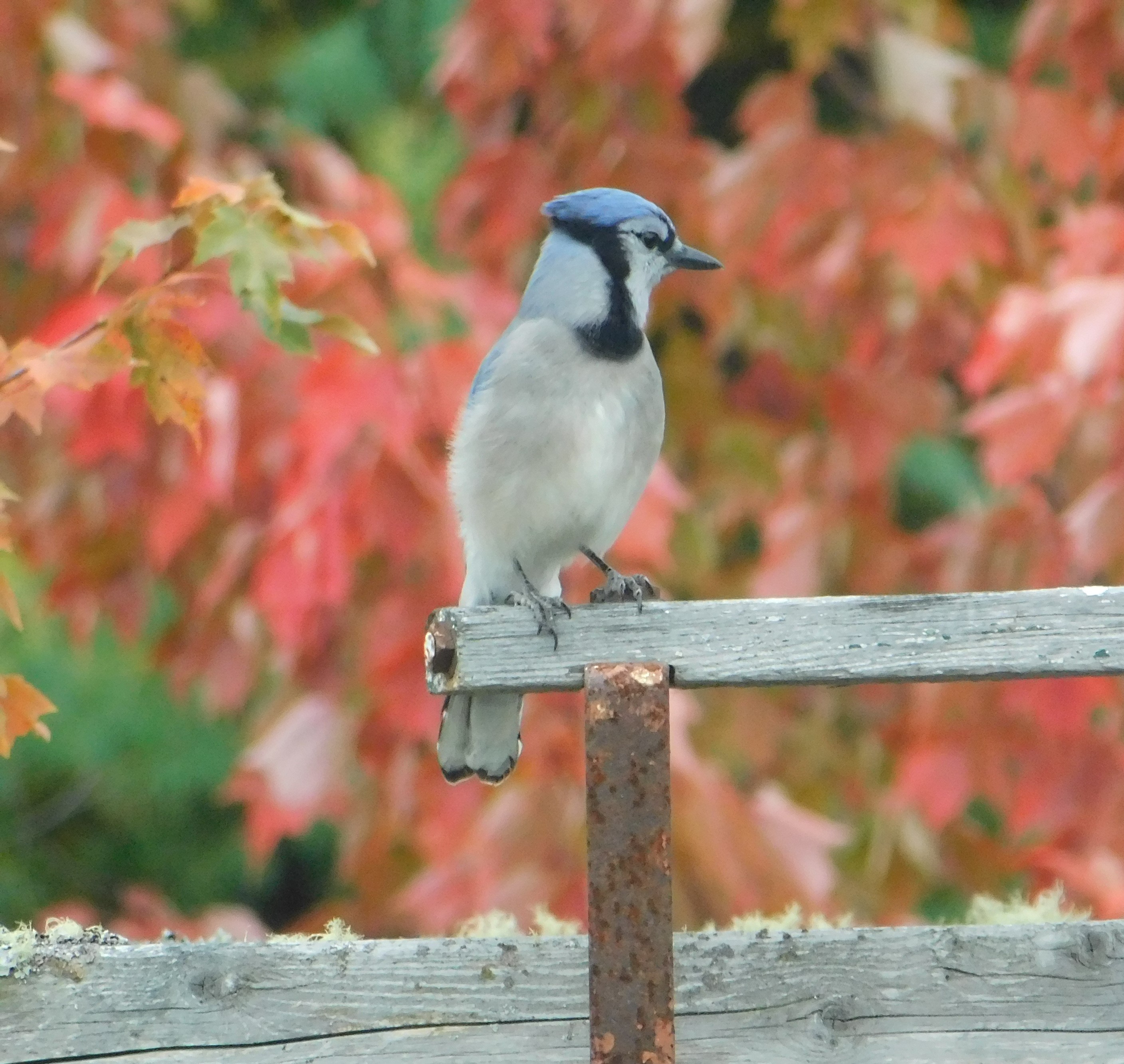
~

~
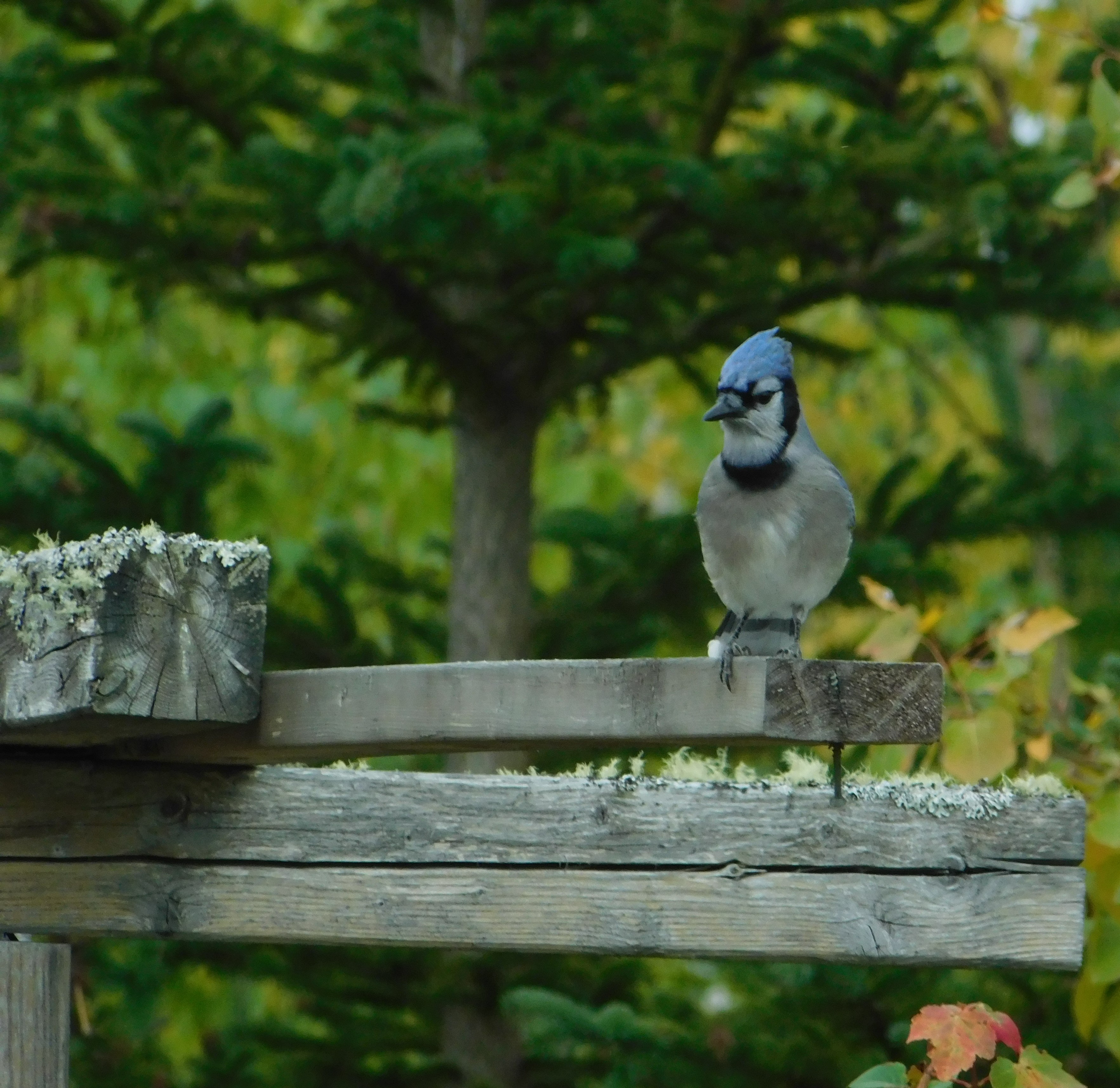
~
dark choke-cherries, scarlet keys of ash
hang, counterweight to summer
blue jays strip the branches, berry by berry
v-beaks and hollow throats
(from my up-coming book “in the shelter of the covered bridge”)
~
~
Copyright Jane Tims 2017
Bald eagle
On a drive along the Saint John River south of Oromocto, we were happy to get great views of two Bald Eagles.
~

an uneasy gathering on the river ice …
~

watching for dinner …
~
~
Copyright Jane Tims 2017
a pair of Painted Turtles
We did our usual bird-watching run along the St. John River on Sunday afternoon. We ordinarily follow the same circuit, from Oromocto, along the north side of the River, to Jemseg, crossing the River via the Gagetown Ferry, and returning on the south side of the St. John River. This area is in central New Brunswick, east of Fredericton.
The first part of this circuit is along the old Trans Canada Highway, now Route 105. This section follows the St. John River, through the Grand Lake Meadows, an important wetland area for New Brunswick. Near the spot marked ‘A’, we saw lots of ducks, an Osprey eating a fish, and three other raptors (a group including hawks or eagles) too distant to identify. Near ‘B’ is the place we often see various owls, Bald Eagles, and Moose.
From Jemseg, we take Route 715 to Lower Jemseg. This part of the route travels above the River, through farmland. We rarely see wildlife along this section, but the area has a rich history and has several interesting buildings, including the old church featured in my post of September 14, 2011.
From Lower Jemseg, we turn towards the Gagetown Ferry and Scovil. This is a very interesting part of the route, snaking between wetlands and ponds. Along this section, it is usual to spot other cars of eager birdwatchers.

a wet field near Scovil … there are two American Black Ducks in the grass to the left and two Canada Geese beyond the pond … this is the same pond where we saw a Glossy Ibis on April 23, 1988
The highlight of our trip on Sunday was a group of three Painted Turtles (Chrysemys picta) on a log along this last section of our route, near the spot marked ‘C’.
The turtles were sunning themselves on a log in the middle of a pond. They have dark green, smooth shells, with bright orange markings along the edge of the shell. The inside of the lower shell is bright yellow. Their heads and tails are also marked with short streaks of orange and yellow. All winter these turtles have been hibernating at the bottom of the pond. Now awake, they will live in the pond all summer, laying eggs and feeding on aquatic insects and vegetation.
These Painted Turtles were stretching their necks out of their shells as far as possible. They made a beautiful sight, their colorful shells mirrored in the pond water.
~
~
Painted Turtles
~
I study the colors
through binoculars
remember these
with my hand, my fingers
rock the fine focus
rotate the brush
pick paint from the palette
~
the shell, flat olive tiles, grouted
Payne’s Grey
the wrinkled foot and leg, relaxed along the log
Burnt Umber
on the tail, the neck, the head
deft strokes of Cadmium
Yellow and Orange
~
the head stretches, to soak in sun
and dazzles on the pond
the lower shell
Yellow
refection on water
~
and, at the edge of the carapace
bright dabs of Orange
one part Cadmium
two parts Quinacridone
and a touch of some unknown
translucence
elusive
~
© Jane Tims 2012








